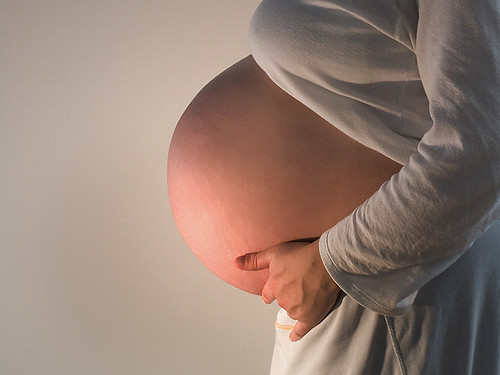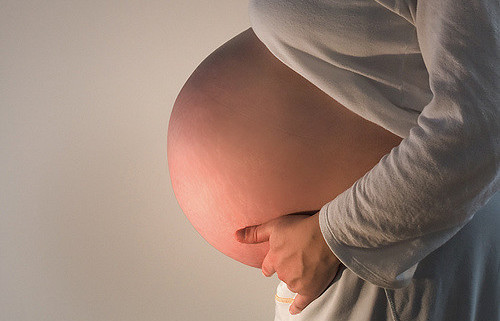After Giving Birth: Your Guide to Recovery

Labor is no joke — first-time moms take about 8 hours on average to get through it. That’s a full workday of contractions. But then, your new little one is born, the afterbirth passes, your belly deflates, and you go home a glowing new parent … right? Well, not quite. After giving birth, you’re going to need some time to recover.
Safe Birth Project has your after-birth recovery guide, addressing both your body after giving birth and mental recovery after pregnancy.
Contents
Your Body After Giving Birth
Pregnancy is really hard on your body, as is labor. Your organs are smushed out of the way as your belly grows, your skeleton has to carry all that extra weight, and your heart has to work overtime to supply both you and the baby with blood. Contractions are a serious workout for your abdominal muscles and labor makes your whole body strain, so chances are you’re going to be sore for at least a few days after delivery. Basically, your muscles are going to be really tired.
Take ibuprofen for the muscle pain and get plenty of rest after giving birth.
Here are a few other common physical problems after birth and their solutions.
Post-Delivery Contractions
Delivery seems like the end of the line, but it’s not — you’ll continue to have contractions for a few days after delivery as your uterus shrinks back down to its pre-pregnancy size. These post-delivery contractions are called “afterpains.” They should go away within 3 or 4 days, although it can take a couple of months for your uterus to fully shrink back.
Again, take ibuprofen for the pain. If it’s severe, your doctor may prescribe you a stronger pain medication.
Vaginal Pain
If you had a vaginal delivery, your vagina will likely be sore — especially if you had a perineal tear or an episiotomy and needed stitches. You may feel pain, discomfort, and even numbness for a few days or a few weeks as your body heals. You may also experience vaginal bleeding and discharge (lochia) for the first couple of months after pregnancy. Hemorrhoids are another common side effect of labor and delivery.
Ibuprofen is yet another common solution! You can use an ice pack on your vagina for 10-20 minutes at a time to ease discomfort; remember to put a cloth between the ice and your skin. You may find that toilet paper is rough and painful, so you can use a bottle to squeeze water over yourself when you need to tidy up. A sitz bath — sitting in a few inches of lukewarm water for 10-15 minutes — can also help ease irritation and promote healing.
If you’re bleeding or having discharge, use pads rather than tampons since tampons can cause further irritation. You may also want to use disposable underwear after delivery while the discharge and bleeding are heaviest.
Don’t do anything to strain your vagina for at least a month or two after delivery — no sex and no long car trips, for example. Your doctor will let you know when you’re healed enough to return to normal activity.
Urinary or Fecal Incontinence
You may experience urinary or fecal incontinence after a vaginal delivery, as the muscles that control those functions may get stretched or damaged during labor. You may find that you leak when you laugh, cough, or exercise. You’ll also continue to urinate frequently as your body sheds excess fluid.
You may be able to regain full control with Kegel exercises. Use pantyliners or pads to protect your clothing.
C-section Pain
If you had a C-section, you may experience pain and discomfort in your lower abdomen.
Follow your doctor’s aftercare instructions carefully to avoid the risk of infections or complications. You may need to take pain medicine for a couple of weeks after delivery. Don’t lift anything heavier than your baby and avoid strenuous exercise until your doctor gives you the go-ahead. If you’re experiencing vaginal bleeding, use pads rather than tampons. You may find that sneezing or coughing causes sharp pain. You can ease the pain by holding a pillow over the incision if you need to cough or sneeze.
Check the waistbands on your clothes, too. Make sure to wear clothes that don’t rub directly on your C-section incision.
Sore Breasts
Your breasts may get swollen and sore, especially a couple of days after delivery. They’re ramping up milk production to feed your new little one, but that can be painful and uncomfortable.
You can take ibuprofen for the discomfort. A warm compress before breastfeeding may help ease the process and relieve some of the pressure, as can breastfeeding or pumping more often. A cold compress after nursing can also reduce pain and swelling, but remember to place a cloth between the ice pack and your skin.
Postpartum Hair Loss
When you’re pregnant, your hair may get extra thick and shiny — which is a great bonus. Once you deliver, however, you’ll lose that extra hair.
It can feel like you’re losing way too much hair, but it’s perfectly normal. Your body is just returning to it’s ordinary cycle of hair growth and loss and there’s nothing to be concerned about.
Losing the Baby Weight
You may lose up to 10 pounds when you deliver, but your belly won’t snap right back afterward. The muscles in your abdomen are stretched out and you’re still holding a lot of extra water weight. Go easy on yourself with a gentle exercise routine and avoid strenuous workouts until your doctor tells you it’s OK. Check out a few of our articles for exercise ideas once you’re ready; you’ll want to focus on your core, but you can also slowly return to some of your favorite workouts you couldn’t do while pregnant, like hot yoga and headstands!
Mental Recovery After Delivery
You just spent 40 weeks growing a new person — that’s stressful! Now that new person is here in your arms, and it’s up to you to start being a parent … yep, stressful again!
Taking care of your emotional and mental health is just as important as taking care of your physical health after giving birth. Check out a few of our common baby blues and how to address them.
Emotional Swings
You may feel very emotional for a few weeks; it’s a combination of a big exciting event in your life and lot of hormones flowing. You’ll likely be sleep-deprived, which can also lead to emotional swings. If you have a partner, you’ll both focus on the baby more than each other. That’s a good thing for the baby, but it also means you’re coping with a changing relationship at the same time as everything else.
Try to be patient. Reach out to other new parents, your friends, and your family for support. If you have a partner, be open about how you’re feeling and what you need. It’s OK to ask for a few minutes of alone time or time with a friend so you can relax.
Postpartum Depression
“Baby blues” are fairly common in the first couple of weeks after pregnancy, but if it doesn’t go away or if your symptoms are severe, you may be suffering from postpartum depression. Very severe postpartum depression may worsen into postpartum psychosis, which requires immediate medical attention.
You should contact your doctor to ask about treatment, which may include therapy or medication. Postpartum depression is treatable — you don’t have to suffer through it. If you show symptoms of postpartum psychosis, including hallucinations, delusions, or bizarre behavior, you need emergency medical attention.
On the Road to Recovery After Labor
The good news is that most of your recovery will only take a few weeks — you’ll be good as new in no time and with a new baby to boot! Everyone’s recovery after giving birth will be different, but the key is to take good care of yourself and your partner.
Share your recovery stories in the comments below!
Image Credit and License








Leave a Reply
Want to join the discussion?Feel free to contribute!